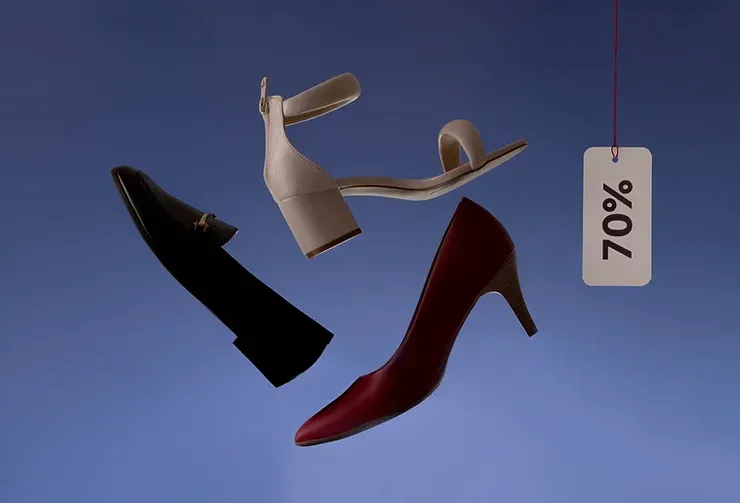The ROAS, MER, LTV and CAC Formulas, Real Examples and Strategy
In marketing in Italy we are constantly immersed in endless discussions about "performance" and "sales results", as if 1) this discipline were equivalent to commercial and had to limit itself to bringing sales with each campaign and each operation, without any interest in strategy, quality, satisfaction, brand strength and long-term growth, 2) it was easy and realistic to manage attributions and results of individual campaigns in an atomic way and separated from the rest.
I continually see tutorials, courses and Excel sheets that promise, with the sole calculation of the ROAS (return on investment) for each single campaign, to understand the trend of marketing, to orient it, to create an entire strategy, to make everyone become millionaires.
Exactly like thinking of controlling an entire 747 from takeoff to landing by moving the flap lever.
Illusions of a country that is increasingly drifting into provincialism due to training gurus and fuffaguru, inexperienced agencies, inability to see. Every single piece of scientific evidence shows how this short-sighted marketing approach oriented only towards easy sales for a single operation always leads to defeat or suboptimal results in turnover.
In this article we will try to give you a more professional approach, from an agency, from a real and not improvised marketing office, analyzing the economic indices in their correct context. We talk about sales and money, but in broadest and most correct sense.
The understanding and calculation of crucial metrics such as ROAS (Return on Advertising Spend), MER (Marketing Efficiency Ratio), LTV (Lifetime Value) and CAC (Customer Acquisition Cost) is in fact fundamental for the success of a business strategy.
ROAS (Return on Advertising Spend)
ROAS is an indicator of the profitability of advertising expenses. It is the simplest and most overused version of economic indicators in our discipline because it is superficially easy to understand and calculate. Just like when you overindulge in sweets, the abuse of ROAS however generates addiction, a shapeless physique, and a certain weakness.
ROAS is calculated by dividing the profit generated by an advertising campaign by its cost.
- Formula: ROAS = (Profit from an advertising operation / Cost of the advertising operation)
- Real example: A company spends €1,000 on an advertising campaign and generates sales of €3,000. Its ROAS is 3:1, indicating that for every euro spent on advertising, the company earns 3 euros.
What's the problem here? Many. And almost all invisible to inexperienced people, companies and gurus:
- Practically no one is able to calculate all the marketing costs in the ROAS (staff, agency, extras) because it is almost impossible to divide them per single campaign in a rational and non-random way. The calculation is made referring only to the advertising investment (e.g. Google's cost). Not very useful. Indeed, ridiculous.
- Not all campaigns are designed for sales. Indeed, in the optimal marketing strategy according to science, no more than 40% of the campaigns should generate immediate sales activation, otherwise the leverage effect of branding and the typical margins of an excellent brand are lost equity.
- Not all sales campaigns are designed to obtain easy reactions, therefore a high ROAS. There are indeed best-selling products and services, but also others. There are preparatory sales and final sales. Sales useful for getting your "foot in the door" and often at a loss, necessary to acquire customers. And then sales to create profitability. Using ROAS for all of them, comparing them in a paro-paro table, is incredibly crazy.
- Chasing ROAS as the ultimate goal always pushes us to employ manipulative methods based on "pain points" so as to make it higher and higher. The scientific evidence often cited in this blog instead clarifies how these tactics attract low-quality, less than loyal customers who are almost immediately dissatisfied with the purchase. Stuff to stay away from.
- We can infinitely increase the ROAS by increasing discounts. But is this what we want? Seriously?
This does not mean that ROAS is absolutely harmful or demonic, but, in practice, knowing how to use it in the correct context is very difficult and should only be considered if you are a long-time professional.
Let's now look at better indices.

MER (Marketing Efficiency Ratio)
The MER provides a broader view of marketing effectiveness by including allmarketing expenses, not just advertising ones, and considering allsales. Compared to ROAS it is much more difficult to calculate because it requires the calculation of much more information and flows. However, it is definitely more powerful.
It is obtained by dividing the total revenues by the total marketing expenses on each channel over the same period of time, which must be quite long, typically at least one year.
- Formula: MER = (Total Revenue / Total Marketing Expenses)
- Real example: In one year, a company has revenues of €1,000,000 and marketing expenses (including staff, agency, media budget) of €250,000. His MER is 4:1, generally considered very good.
Why the MER is a better index
While ROAS focuses on the immediate return on advertising costs of a specific advertising operation, MER evaluates the overall effectiveness of marketing, including both conversion and branding and awareness activities brand. Branding activities and those at the top of the funnel are indeed crucial to building brand awareness and consumer trust, but often do not lead to immediate conversions, thus escaping measurement through ROAS.
The use of the MER also allows companies to have a more complete vision of the impact of their marketing activities, allowing them to better balance expenses between direct conversions and brand building. Finally, it allows for better strategic and economic forecasting capabilities.
Let's see a practical example, so as to better appreciate the issue.
The special burgers, a real example of MER
VegStark is a start-up that produces excellent, healthy and delicious organic soy burgers. A fund has acquired many shares and expects explosive sales results for next year: as many as 20 million euros!
Obviously it is a very intense business in terms of work and with high costs. The expected gross margin will therefore only be 20%, 5 million euros. To obtain the expected 20 million, 4 million will be allocated to marketing, with a contribution margin (net profit + fixed costs) of 1 million euros.
WED calculation: 20/4 = 5
Definitely an optimistic MER, probably unachievable. If I were the marketing director, I would diversify the strategy and prepare a plan B to keep marketing costs under control.
~~~
Let's now proceed with two other exceptional indices, before having the complete picture.
LTV (Lifetime Value) and CAC (Customer Acquisition Cost)
We see two other economic elements that are important and often cited in discussions in the context of marketing.
LTV represents the total profit that a customer generates for the company during his relationship with it. It is calculated by considering the average profit per customer, the average purchase rate and the average duration of the customer-company relationship.
- Real Example: If customers provide an average gross margin of €150 per purchase, purchase twice a year and remain customers for an average of 5 years, the LTV is €1,500.< /p>
CAC is the average expense necessary to acquire a new customer. It is calculated by dividing the total marketing expenses by the number of new customers acquired.
- Formula: CAC = (Total Marketing and Sales Expenses / Number of New Customers)
- Real Example: If a company spends €5,000 on marketing and sales and acquires 100 new customers, its CAC is €50 per customer.
The problem with CAC is that, by definition, it refers only to new customers acquired and not to all customers in the broad sense and on channels where it is not possible or easy to track the conversion of new ones . So great for startups, rather inflated and out of place for many other brands. For this reason, in the next lines, we will use a less specific but more useful CAC.

The easy procedure to calculate LTV, CAC and MER
In the real world it is difficult for a brand to calculate LTV, CAC and MER, even if from many points of view they are the Holy Grail of business. Curiously, we continually talk about these indices in a qualitative way , confused and taking them for granted, while in our experience companies need practical, quick and dirty advice, and little from a "TED Talk". For this reason, we try to give an operational procedure to connect MER, CAC and LTV with very feasible calculations for small and medium-sized brands, so as to make them operational and useful, and not just beautiful icons to admire and comment on randomly:
- We establish a reference period. Let's say a year. A year and a half or two years would be better, but needs often force us to shorter times.
- We calculate the net sales over the period: total sales - discounts and refunds.
- Let's calculate the Cost of Goods Sold (COGS)< /a>: all costs directly related to our production of products or services sold.
- Let's calculate the gross margin (Gross Margin): net sales - COGS.
- We calculate the LTV: gross margin / number of active customers during the year.
- We calculate all themarketing expenses incurred during the year: staff, agency, media investments, software...
- Let's calculate the MER: net sales / marketing expenses
- We calculate a CAC sui generis (universal), i.e. not referring only to the acquisition of new customers, but to the entire sum of active customers during the year, so as to make it comparable with the rest of the our indices. We use the formula: marketing costs / number of active customers during the year.
At this point we havethree fantastic indexes that tell us a lot about our business; and above all that they give us a continuously updated map to follow over time to understand how much our brand is improving. For example, every beginning of the month we can take the time period (rolling window) of the last 12 months just concluded, and automatically calculate these indices, then plot them on a graph and see how they are moving, month after month. And here, do analysis.
So:
- If possible, we avoid the use of ROAS. Otherwise, let's give it the right weight.
- We use a fairly long window to calculate MER, CAC "sui generis" and LTV.
- CAC (as we understand it here) tells us the real cost of managing/acquisition/stimulation/loyalty of each of our customers, new and existing. So, if it rises, yellow alert.
- MER is instead the synthesis of the leverage effect of our marketing. If CAC rises but MER remains stable, the situation is under control. It just means that for a thousand reasons marketing is costing more. But not bad. In the end it doesn't impact the business.
- The MER is expected to increase over time! Otherwise, another yellow alert. Something does not work. Further analysis is needed.
- LTV describes the gross margin (sales net of costs of products and services) generated by the typical customer. If it drops but MER remains stable, we can rest assured. It means that each customer generates less money for us, but we have increased the number of customers. Something positive because it implies greater market penetration.
- Obviously, if LTV steadily declines month after month, CAC rises month after month, and MER remains stable or slopes slightly and gradually, we need to figure out what the heck is going on. Are we consciously working on aggressive penetration and brand equity (well done!), or are we simply about to witness a collapse of the MER because our marketing strategy is doing everything wrong and we are in the calm before the storm?
Attention: if a company invests in both sales and marketing, it must be understood whether to isolate the two items or aggregate them into "total marketing expenses". A non-trivial choice.
The elephant in the room
Let's face it: as much as we've made things pretty simple in this article and brought the calculations "down to earth" in any way possible, it is clear that we are not talking about animals that are easy to manage. They are ferocious beasts. Not so much for the formulas that we have made manageable here, but for the analysis of the indices and the relationships between them.
For this reason it is necessary to rely on strategic partners with long experience in marketing and business, who support us and give us a compass to give the correct interpretation to all this without making us go wrong.
Deep Marketing, with its senior managers and a long list of successful clients, is here for you. If you need help, don't hesitate to contact us without obligation.












